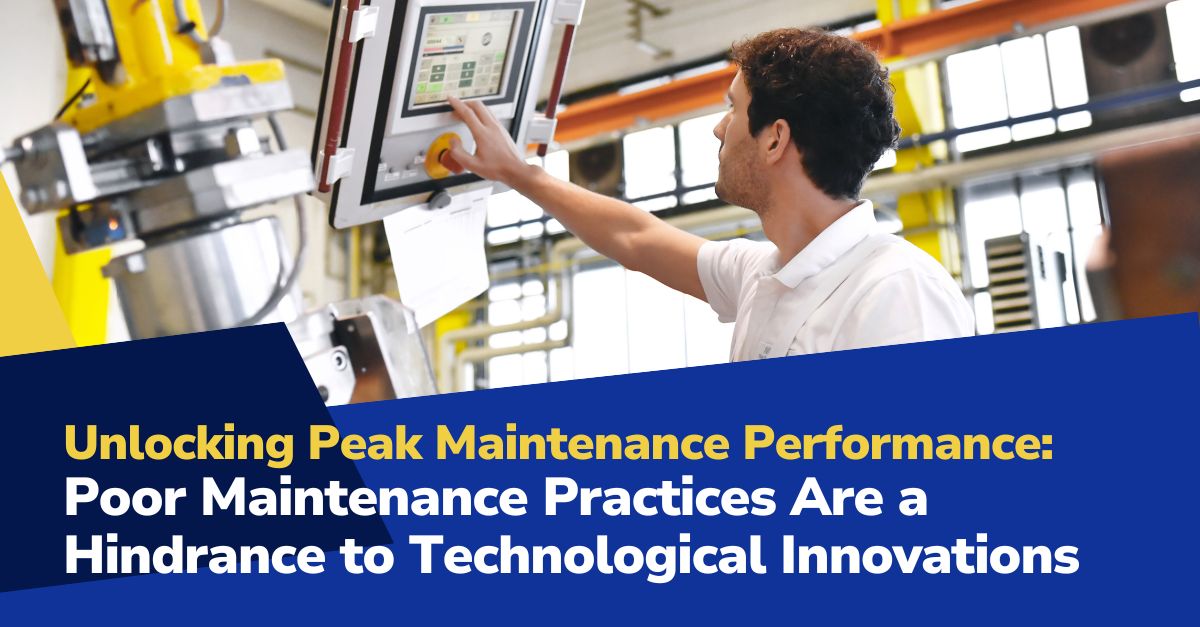
The Technological Gap in Maintenance
Staying ahead of technological innovations is crucial in manufacturing. Yet, the gap between existing maintenance strategies and modern needs is a significant barrier to embracing these advancements.
This ninth installment of the “Unlocking Peak Manufacturing Maintenance Performance” series from POWERS emphasizes the criticality of adopting modern maintenance techniques in the face of the fourth industrial revolution. The strategic integration of these advanced technologies is not just an option but a necessity for future growth and sustainability.
1Failure to Leverage Predictive Maintenance:
Manufacturers with outdated maintenance strategies are unable to utilize predictive maintenance technologies. These advanced tools, like sensor-driven analytics and AI, forecast equipment failures and optimize maintenance schedules, significantly reducing downtime. Ignoring these innovations results in missed efficiency and cost savings opportunities, impacting operational effectiveness and competitive edge.
2Overlooking CMMS and Its Benefits:
The reluctance to implement Computerized Maintenance Management Systems (CMMS) can lead to disorganized maintenance schedules, inefficient resource allocation, and increased operational costs. CMMS streamlines maintenance tasks, ensuring more reliable and efficient operations and providing a foundation for strategic decision-making.
3Inadequate Data Analysis:
Without modern maintenance tools, manufacturers miss out on valuable data-driven insights. Technologies like IIoT (Industrial Internet of Things) provide critical data on equipment performance, which can be used to optimize manufacturing processes and reduce costs, leading to a more agile and responsive manufacturing environment.
4Ignoring Digital Twins for Operational Efficiency:
Digital twins – virtual replicas of physical systems – allow manufacturers to simulate and analyze operations. By not utilizing this technology, manufacturers forego the ability to identify potential issues before they occur, hampering proactive maintenance and innovation.
5Delayed Response to Market Changes:
In today’s fast-paced market, quickly adapting to changes is critical. Lack of advanced maintenance systems results in slower response times, making it difficult for manufacturers to stay competitive.
6Poor Asset Lifecycle Management:
Traditional maintenance approaches often fail to manage assets’ lifecycles effectively. Advanced maintenance technologies offer comprehensive insights into asset performance and health, leading to more informed decisions about repair or replacement.
7Underutilization of IIoT for Maintenance Efficiency:
IIoT has revolutionized maintenance by enabling real-time monitoring and analysis. Manufacturers who do not adopt these technologies are missing out on optimizing maintenance routines and reducing downtime.
8Neglecting the Advantages of Automated Maintenance:
Automation in maintenance, through technologies like robotics and AI, significantly increases efficiency. Manufacturers sticking to manual processes are less efficient and more prone to errors and delays.
9Failing to Implement MMOS:
The absence of a Maintenance Management Operating System (MMOS) means manufacturers lack a structured approach to maintenance, leading to inconsistent practices and suboptimal performance.
10Overlooking Sustainability through Advanced Maintenance:
Modern maintenance technologies improve efficiency and contribute to sustainability by optimizing resource use and reducing waste. By not adopting these technologies, manufacturers miss out on achieving sustainability goals.
POWERS: Embracing the Future of Maintenance
The fourth industrial revolution offers many tools that can transform maintenance strategies. Manufacturers can significantly improve productivity and financial performance by embracing technologies like CMMS, IIoT, Digital Twins, and MMOS. However, failing to adopt these advancements can create a barrier to technological innovation and hinder a firm’s competitiveness in the global market.
At POWERS, we understand the importance of integrating advanced maintenance strategies into manufacturing operations.
Our Advanced Maintenance Performance (AMP) program is designed to help manufacturers leverage the latest technologies, ensuring operational excellence and long-term success.
Are you ready to break the barriers and step into the future of manufacturing? For a comprehensive assessment and guidance on integrating advanced maintenance technologies, contact our dedicated team at +1 678-971-4711 or info@thepowerscompany.com
“Unlocking Peak Manufacturing Maintenance Performance” is a crucial guide for any manufacturer looking to thrive in the modern industrial landscape. In our next installment, we will explore further aspects of optimizing manufacturing performance through effective maintenance strategies.
Continue Reading from this Mastery Series
- Part 1 - The Critical Link Between Maintenance and OEE
- Part 2 - How Maintenance Practices Shape Product Quality
- Part 3 - How Poor Maintenance Standards and Practices Impact Schedule Adherence
- Part 4 - How Maintenance Practices Echo Along the Supply Chain
- Part 5 - The Impact of Maintenance on Maximizing Return on Assets (ROA) in Manufacturing
- Part 6 - Poor Maintenance Practices Lead to Out-of-Control Operational Costs
- Part 7 - Navigating the Safety and Compliance Minefield in Manufacturing
- Part 8 - The High Cost of Overlooking Maintenance in Manufacturing Strategic Planning
- Part 9 - Poor Maintenance Practices Are a Hindrance to Technological Innovations
- Part 10 - Overcoming the ‘Reactive’ or ‘Run Till it Breaks’ Pitfall







